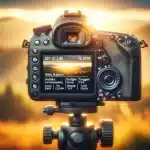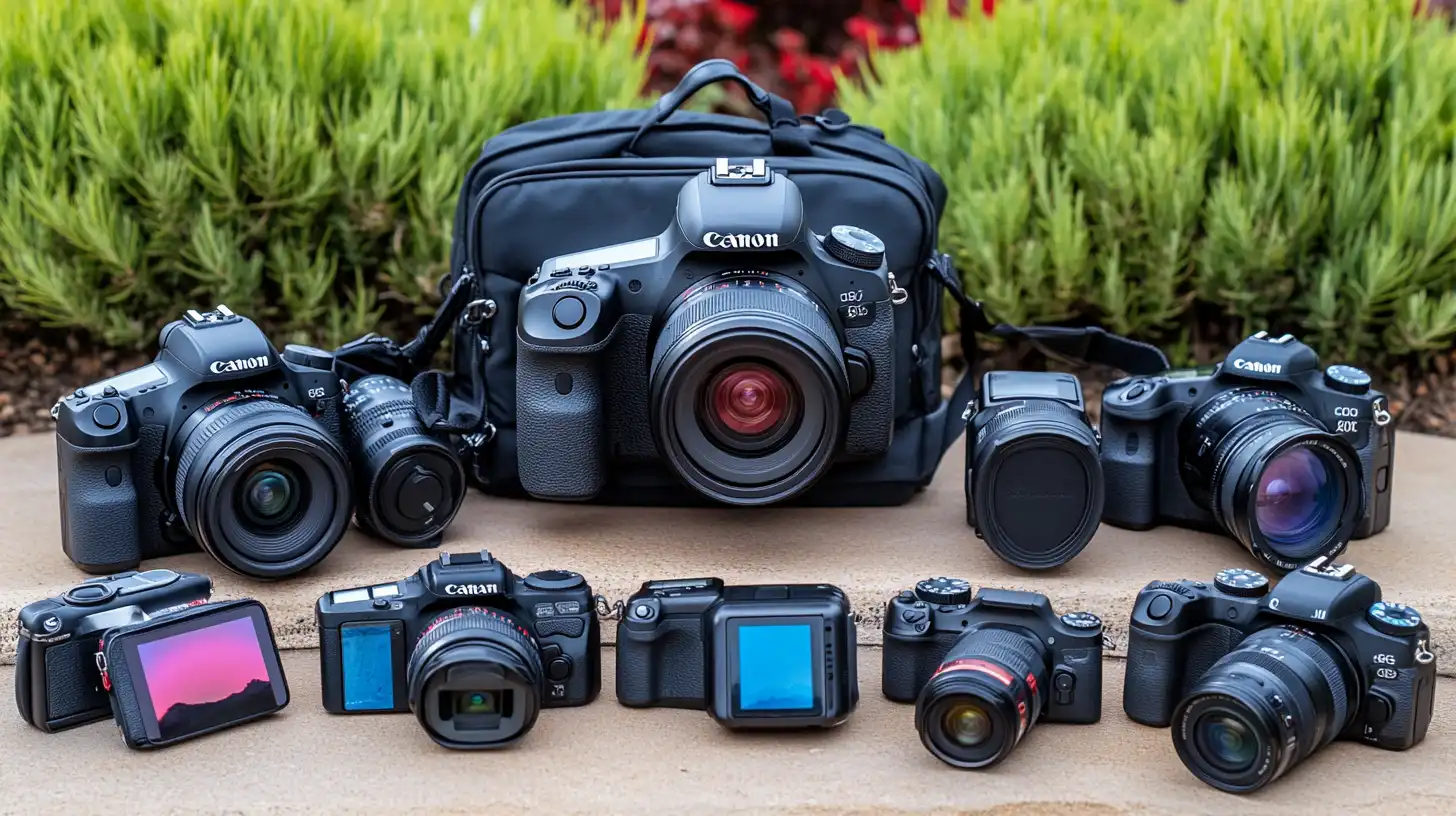
When it comes to choosing the right photography gear, understanding the nuances between different digital cameras is important.
This guide will help you discover how these cameras can enhance your photography journey, from high megapixels to lightweight designs.
Let’s explore the world of digital photography together, ensuring you have the right tools to create stunning visuals.
Table of Contents
Different Types of Cameras
In our journey to understand the vast world of photography, we encounter various types of cameras.
Each type of camera offers unique features and caters to diverse needs.
Fixed-lens Cameras
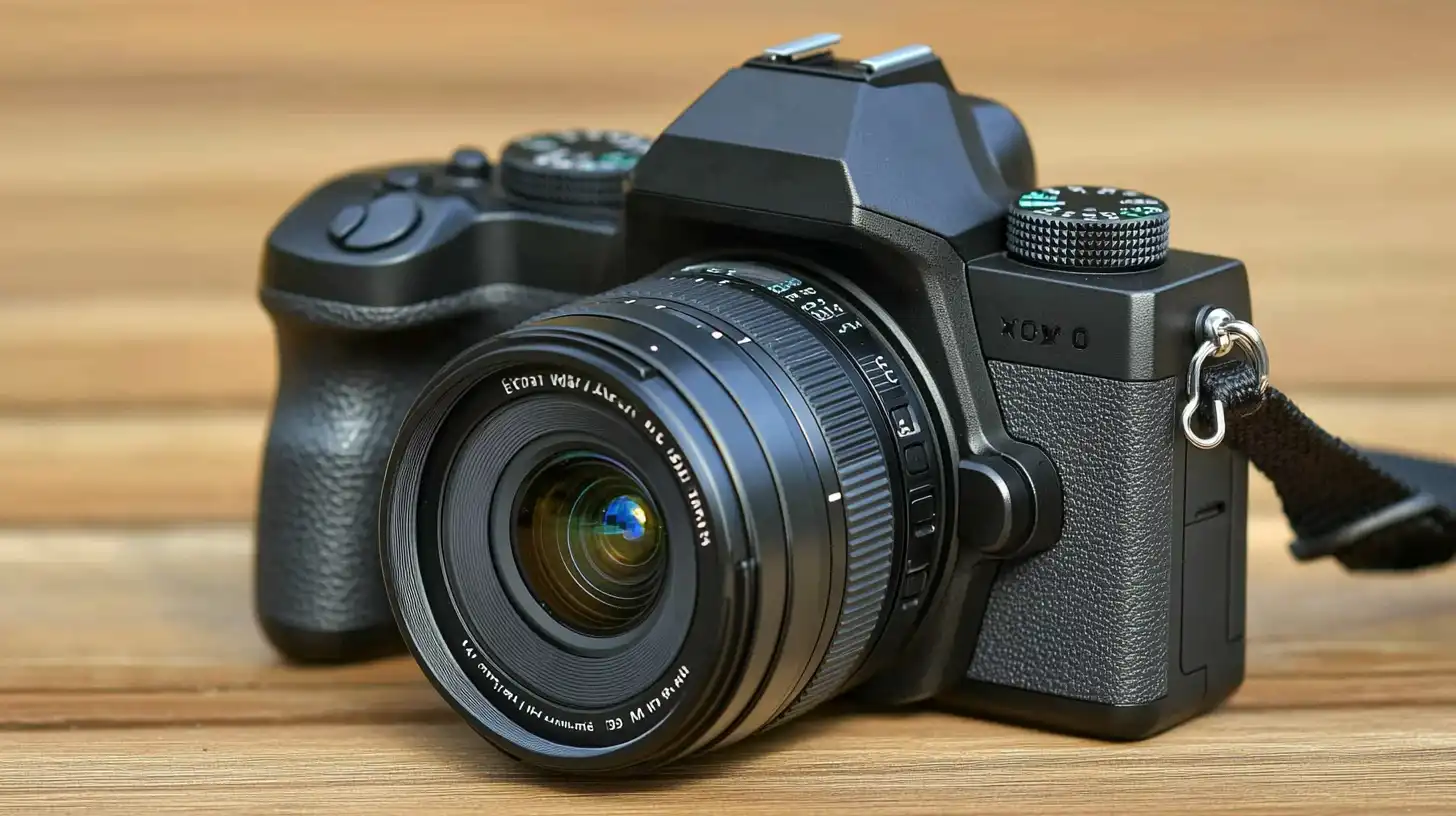
Fixed-lens cameras come with a lens that can’t be swapped out.
They suit those who prefer simplicity and ease. Entry-level photographers often start with these, as they provide decent image quality.
These cameras sometimes offer optical zoom, which may suffice for basic photography needs. Consider these if you want quick shots without fussing over interchangeable lenses.
Compact Cameras
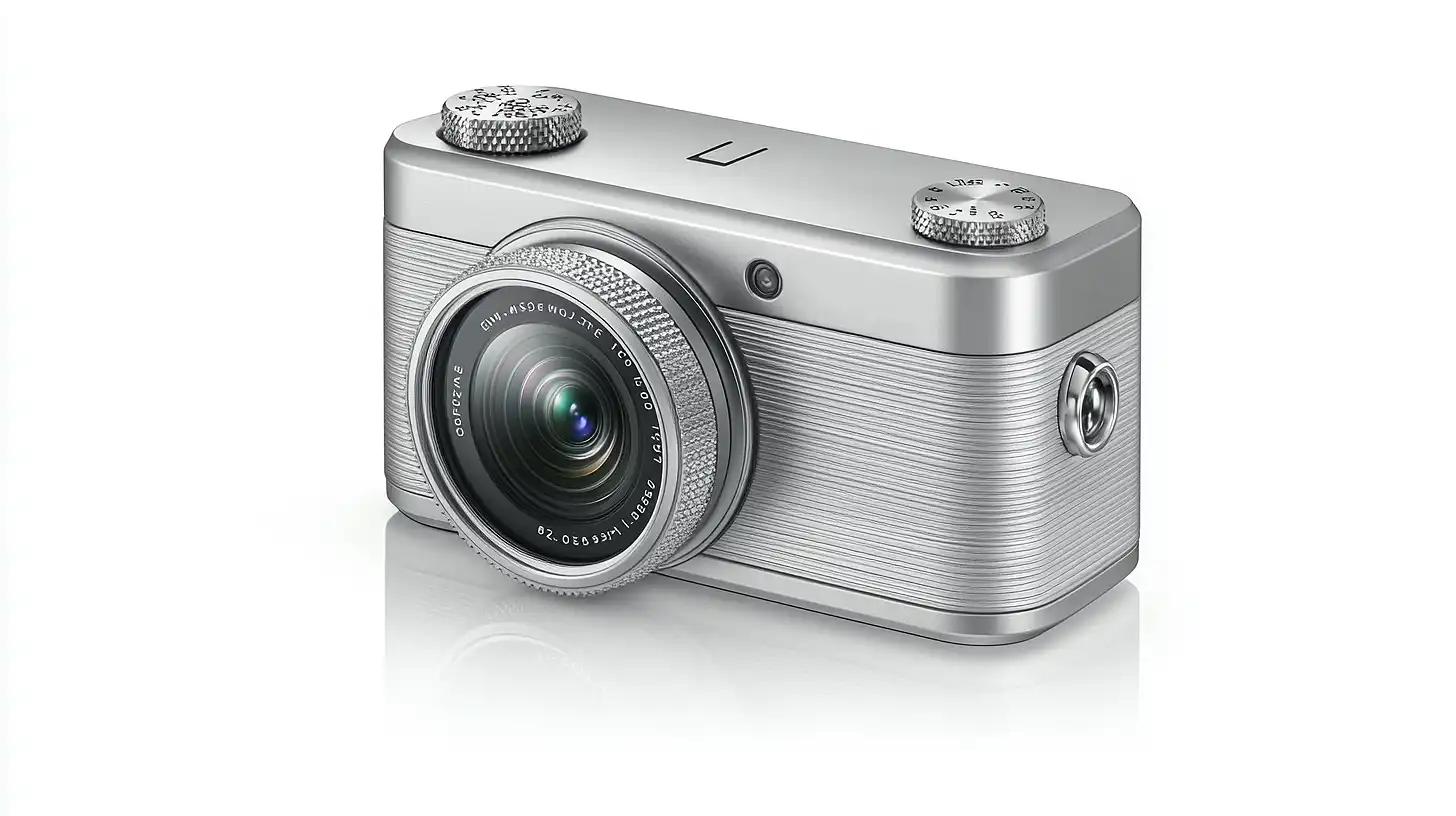
Known as point-and-shoot cameras, compact cameras are highly portable.
These come in handy when traveling or for casual outings. The small size doesn’t compromise too much on image quality.
Despite their size, many still pack a punch and have advanced features like Wi-Fi or touch LCD screens. If discretion and portability matter, compact cameras are reliable choices.
Action Cameras
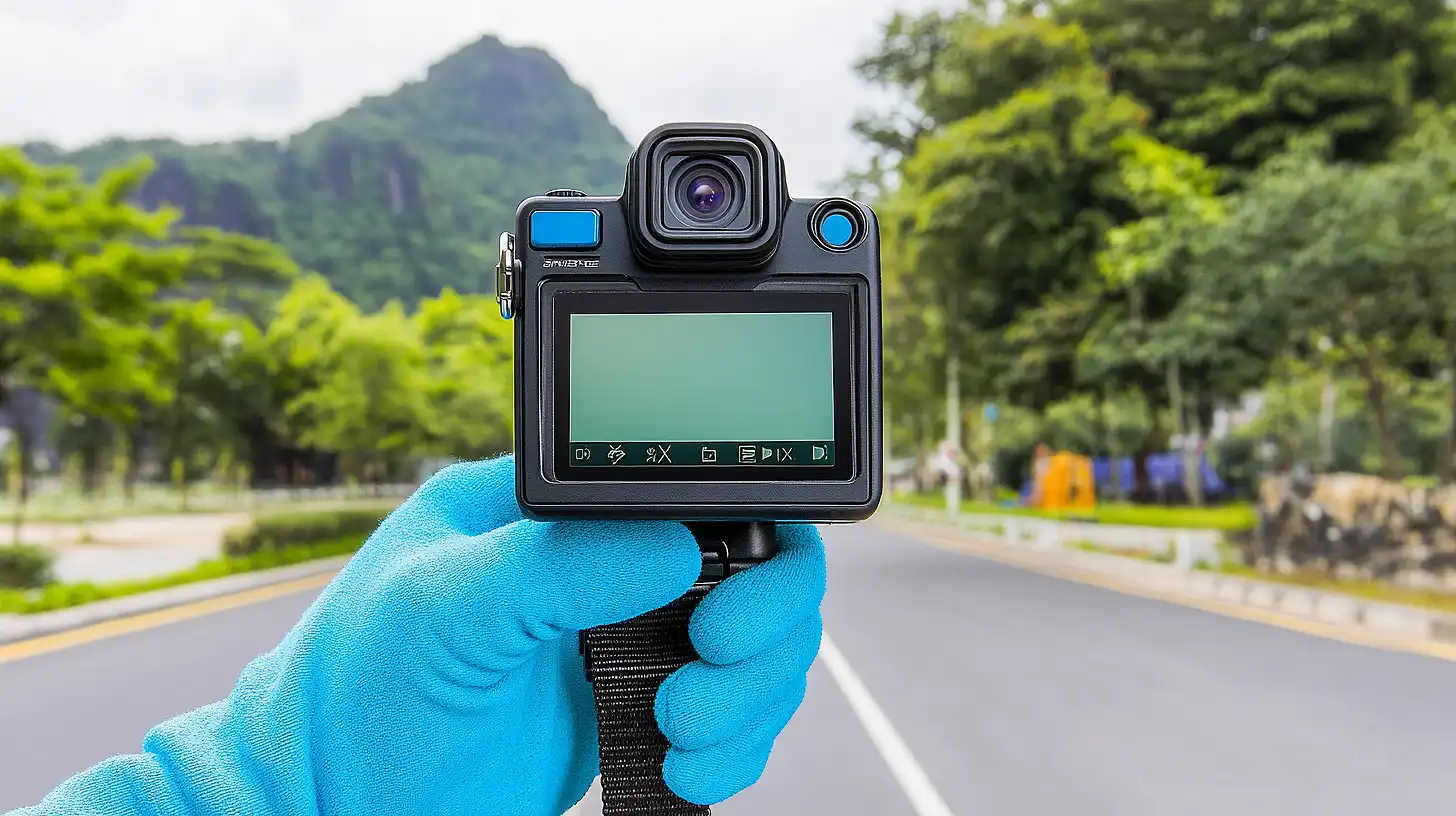
These are designed for capturing movement, making them perfect for sports photography.
With rugged bodies, action cameras withstand harsh environments. Lightweight and easy to mount, they’re favored by adventure enthusiasts.
Despite being smaller than other digital cameras, they offer impressive image quality. For thrill-seekers wanting to document their adventures, nothing beats an action camera.
Pro Tip: Try experimenting with different types of cameras before settling on one that suits your needs. This can open up new creative avenues in your photographic journey.
Additionally, understanding the difference between Photoshop and Lightroom can enhance your editing skills, allowing you to make the most of the images captured with your chosen camera.
Understanding Different Digital Cameras
Digital photography brings forth a myriad of possibilities. Each digital camera holds the power to capture moments in unique ways.
Exploring these different types of cameras reveals diverse functionalities and utilities. Digital cameras play pivotal roles in digital photography by providing versatility and convenience.
The following table provides an overview of the main types of digital cameras, highlighting their fundamental characteristics and benefits to help you find the perfect fit for your photography journey.
| Aspect | Overview |
|---|---|
| Compact Cameras | Ideal for quick shots, easy to carry, and user-friendly. |
| DSLR Cameras | Known for their optical viewfinder, offering more control with a wide range of lenses. |
| Mirrorless Cameras | Lightweight with interchangeable lens options, allowing flexibility without the size of DSLRs. |
| Bridge Cameras | Combine features of compact cameras and DSLRs, equipped with fixed zoom lenses for various shooting needs. |
| Digital Medium Format Cameras | Provide superior image resolution, mainly used by professionals for higher quality images. |
| Film Cameras | Although replaced in many aspects, they maintain a niche presence for enthusiasts yearning for nostalgia. |
Types of Digital Cameras
Explore these types of digital cameras to find the best fit for your needs.
- Compact Cameras: Ideal for quick shots, easy to carry, and user-friendly.
- DSLR Cameras: Known for their optical viewfinder, offering more control with a wide range of lenses.
- Mirrorless Cameras: Lightweight with interchangeable lens options, allow flexibility without the size of DSLRs.
- Bridge Cameras: Combine features of compact cameras and DSLRs, equip with fixed zoom lenses for various shooting needs.
- Digital Medium Format Cameras: Provide superior image resolution, mainly used by professionals for higher quality images.
- Film Cameras: Although replaced in many aspects, they maintain a niche presence for enthusiasts yearning for nostalgia.
Advantages of Digital Cameras
Discover the main advantages digital cameras offer for both casual and professional photography.
- Digital cameras exceed basic imaging; they significantly improve image quality.
- Sharper images and instant review via LCD screens prove advantageous compared to smartphone cameras.
- These devices are undoubtedly innovative, focusing on easy post-production edits with software like Photoshop and Lightroom.
- The variety in types ensures you find your fit, whether it's for casual photography or professional needs.
Choosing the Right Camera
Deciding on the right type of camera depends on individual preferences, yet understanding their functionalities is important. Engaging in hands-on trials of these digital wonders helps grasp their full spectrum of possibilities.
Additionally, knowing the difference between a prime vs. zoom lens can aid in making an informed decision.
Pro Tip: Always check your camera sensor settings before capturing; you’ll ensure flawless snapshots every time!
Interchangeable Lens Cameras Explained
Interchangeable lens cameras open up a world of possibilities. By switching lenses, you tailor your shots to any scenario:
- Trying to capture landscapes? Use a wide-angle lens.
- Wildlife lurking in the distance? Opt for a telephoto lens, one of the best wildlife photography lenses available.
Unlike a compact camera, which limits your options, these cameras let you adapt quickly. Professional results are within reach, whether you use a DSLR model or mirrorless cameras.
Each photograph becomes unique, just like your vision.
Pro Tip: Check out the best landscape cameras and landscape lenses, along with the best mirrorless cameras and the best cameras for wildlife photography, to make the right purchase decision!
Choosing the Right Lens
When selecting the right lens it’s important to consider the camera’s use and your photography goals:
- Are you fond of macro photography or portraits? Each lens serves a different purpose.
Understanding your digital camera is important, particularly the camera body compatibility.
An incorrect lens ruins a potentially fantastic shot. Communicate with fellow photographers or read reviews before deciding.
Trust me; it saves headaches later!
Popular Interchangeable Lens Cameras
In the universe of different digital cameras, certain models stand out:
- Nikon and Canon: Known for their versatile and durable DSLR cameras with superior image quality.
- Mirrorless cameras: Growing in popularity, they lack an optical view finder but are lighter and quieter, ideal for spontaneous street photography.
- Full frame cameras: Provide outstanding results in low light.
- Medium format cameras: Offer unrivaled detail for serious pros, defining perfection when it counts.
The World of DSLR Cameras
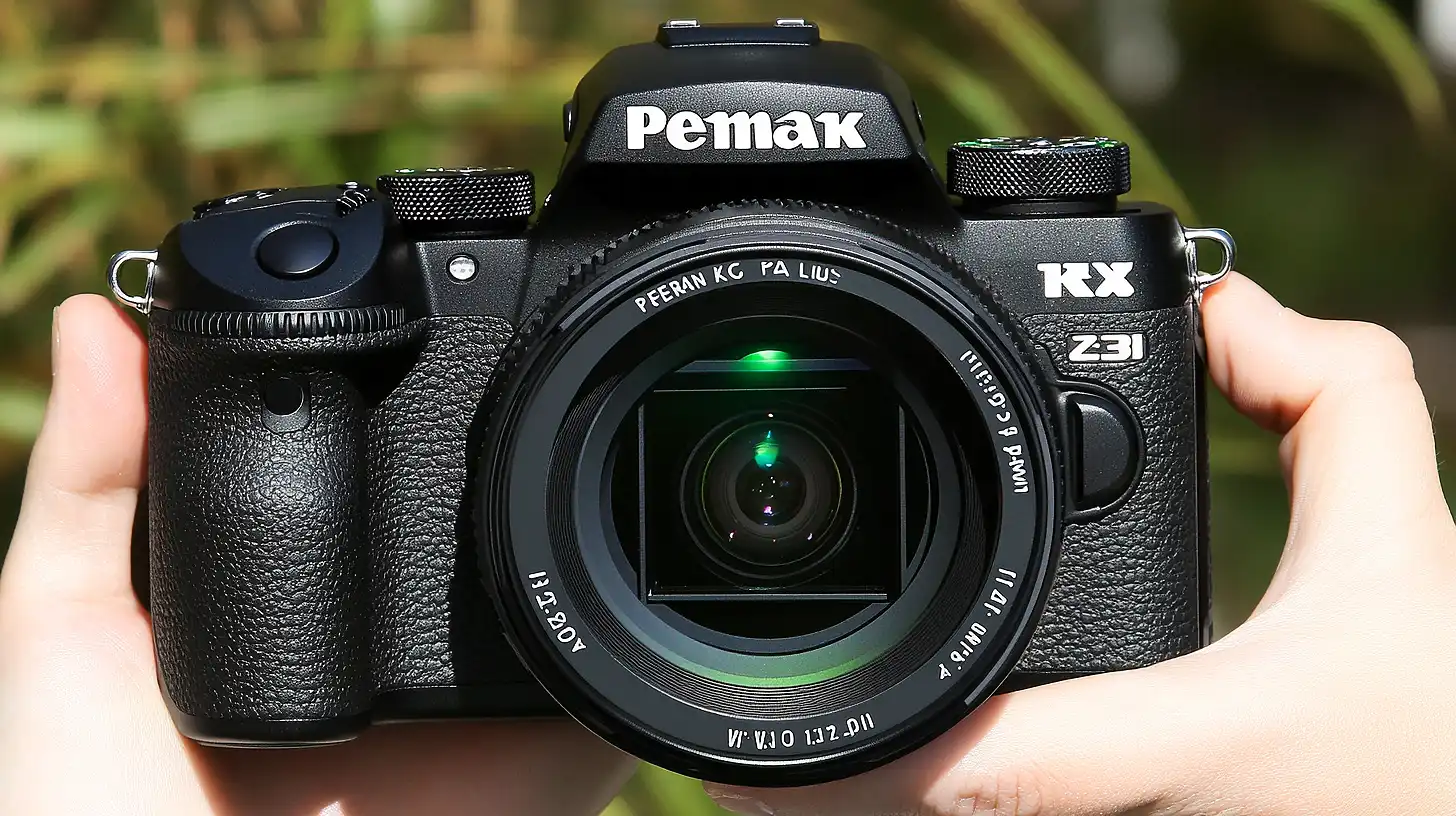
Exploring the vast landscape of digital cameras can feel overwhelming. Trust me, I get it.
But there’s one thing I know for sure: DSLR models are incredible tools for photographers of all skill levels.
Why Choose DSLR?
These cameras offer versatility. You can swap lenses for different types of photos. It’s like having several cameras in one sturdy body.
DSLRs also have bigger sensors, capturing more details than many compact cameras. For those who want to learn Lightroom or Photoshop, having more details to work with is a huge advantage.
So, why not opt for a mirrorless model?
They’re smaller and trendy, but DSLRs still hold their ground with excellent battery life. Plus, they’re usually more affordable.
With various types of cameras out there, it’s significant to find what matches your need for quality and budget.
Main Features of DSLR
Explore the main features that make DSLR cameras versatile tools for creative and precise photography.
- Optical Viewfinder: Lets you see exactly what you're shooting.
- Manual Controls: Allow for creative shots and learning opportunities.
- Adjustable Settings: Tweak shutter speed and other settings to match your vision.
- LCD Screen: Provides a clear view for live-previewing and reviewing shots.
- Durability: Often weather-sealed to withstand various conditions.
Best DSLR Models for Beginners
For beginners, some models stand out due to simple controls and guides. Canon’s and Nikon’s entry-level models often top the list.
They come with helpful features and won’t break the bank. Investing in a good digital camera will make your workflow smoother.
Some models, though not compact cameras, are lightweight, making them easy to handle during long shoots. I would recommend trying out a “medium format camera” for projects requiring high detail.
But starting with a DSLR can provide a solid foundation before moving into more niche types of cameras.
Interchangeable Lens Capability
No talk about cameras is complete without mentioning the interchangeable lens camera capability. This feature greatly enhances the diversity of your shots, allowing you to switch up your photography game swiftly.
When deciding between a prime vs. zoom lens, consider your specific needs and shooting style.
Making Your Decision
Whether you choose a DSLR, a mirrorless camera, or take a nostalgic leap back with film cameras, your journey with types of cameras will be pivotal. They enable you to capture your vision and bring creativity alive.
Pro Tip: Experiment with different lenses. A single lens might not cover all your needs, especially when learning Photoshop or Lightroom. Zoom in, play with depth.
Making the Most of Your Digital Camera
Using a digital camera doesn’t have to be complicated.
First, get comfortable with the basic settings like ISO, shutter speed, and aperture. These are your new best friends in photography.
Knowing these will help you capture amazing photos with any type of camera, even a compact camera.
When you feel adventurous, try shooting in manual mode. It offers more control.
If you have access to mirrorless cameras, give them a try. They’re lightweight and might surprise you with the quality.
Make sure you choose wisely. Explore what works best for different scenarios.
Are we talking long exposure landscapes or close-ups of your pet? Know your subject to pick the right type of camera.
Common Mistakes with Digital Cameras
Avoid these common mistakes to improve your photography results and ensure a smoother shooting experience.
- Don't rely too much on automatic settings. While automatic mode is convenient, it's not always ideal for achieving your creative vision. Start integrating manual adjustments gradually; simply put, automatic settings can limit your creativity and artistic expression.
- Neglecting to keep your image sensor clean is another common mistake. Dust and dirt can accumulate faster than you think, negatively impacting your photo quality. Make it a habit to check and clean your sensor regularly to ensure optimal performance.
- Forgetting about battery life can lead to frustrating moments, especially during important shoots. Always plan ahead and keep a spare battery on hand to avoid interruptions.
- Additionally, misconfiguring your settings for varying lighting conditions can result in overexposed or poorly lit images. Take the time to understand the basics of lighting, as it’s important for capturing stunning photographs. By being mindful of these common pitfalls, you can enhance your photography experience and outcomes.
Enhancing Photography Skills
Improving skills isn’t everyone’s favorite activity, but totally worth it. Consider experimenting with different types of cameras.
Want to go professional? Look into full frame cameras or even a medium format cameras for exceptional quality.
Both will push your limits and knowledge further.
Bridge cameras offer a fun in-between option for learners transitioning from beginner to intermediate levels. As you grow, techniques like rule of thirds begin to feel intuitive.
Pro Tip: Programs like Photoshop and Lightroom allow unlimited creativity after taking the shot. This is where the magic happens, so familiarize both Lightroom shortcuts and Photoshop shortcuts.
Smartphones As a Different Option?
Nowadays, smartphones with top-notch cameras provide an uncomplicated way to dive into photography.
But before we jump to conclusions, shall we explore these little wonders?
The Best Smartphone Cameras
Smartphones today offer more versatility than ever. Their cameras capture breathtaking images rivaling traditional cameras.
It seems unbelievable, right? Welcome to the era of click-and-share!
Why Choose Smartphone Cameras?
Mirrorless cameras attract attention due to their lightweight design and exceptional image quality.
However, mobile cameras incorporate various tech features that simplify photo editing. These improvements often seem futuristic, but they make photography easier for everyone.
User-friendly interfaces on smartphones appeal to people who find traditional systems daunting.
What if I told you that mastering smartphone photography might lead you to explore other types of cameras, like a compact camera or even a bridge camera?
Pro Tip: Smartphones are also a great choice for long exposure phone photography.
Convenience and Spontaneity
Many users truly appreciate the ease of carrying a phone camera throughout the day.
This convenience allows for capturing spontaneous moments that even some traditional cameras might miss entirely.
Whether it’s a beautiful sunset or a candid smile, having your smartphone handy ensures you’re always ready to document life’s fleeting instances.
Pro Tip: Check out the best mobile photography accessories in case you want to level up your game!
Exploring Other Camera Types
Switching from a smartphone to a mainstream type of camera, like a dslr camera, piques curiosity. Understanding DSLR tech or discovering the unique features of full frame camera can turn a beginner into a pro.
As always, there’s a seemingly endless list of types of cameras available, including the elusive medium format cameras. While these options enhance skill variety, they require dedication.
Balancing Creativity and Control
If desired, you can trade simplicity for the complexities of various camera styles and techniques.
Explore mirrorless cameras, consider a versatile point-and-shoot camera, or experiment with new settings and features. Each choice effectively balances creativity and control while maintaining the joy of capturing memorable moments.
Pro Tip: When using smartphones for photo editing in Photoshop or Lightroom, start with basic adjustments like exposure and contrast to create a solid foundation.
Additionally, take the time to learn how to remove shadows in Photoshop for a polished finish that enhances your images’ overall quality.
Frequently Asked Questions (FAQs)
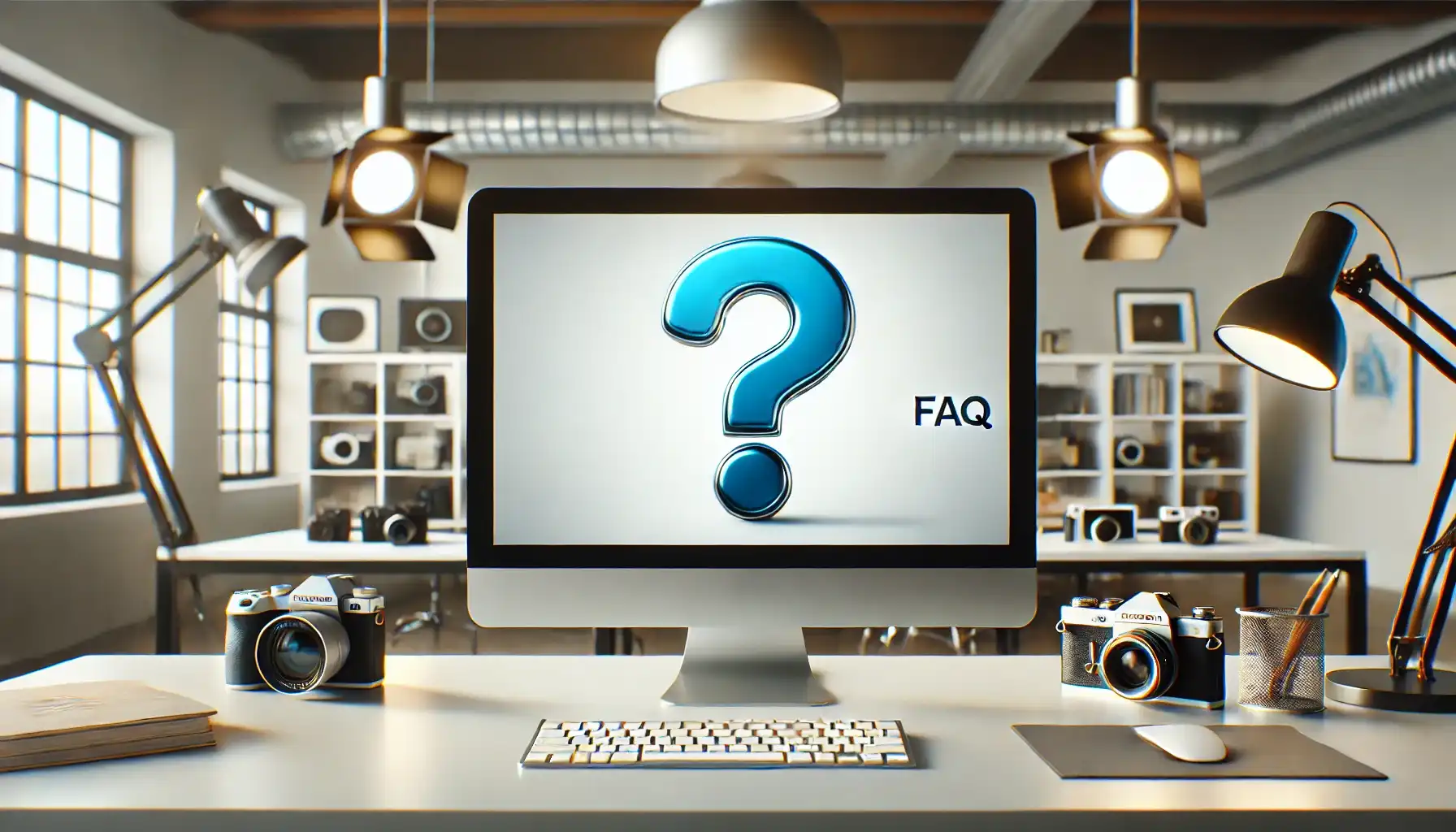
What are some types of digital cameras?
- Compact Digital Camera
- Bridge Cameras
- DSLR Cameras
- Mirrorless Cameras
- Action Cameras
What are the three types of cameras?
The three main camera models are:
- Compact Camera
- DSLR Camera
- Mirrorless Camera
What are the differences between SLR and DSLR cameras?
- SLR (Single Lens Reflex) cameras use film to capture images, while DSLR (Digital Single Lens Reflex) cameras use digital sensors.
- DSLR cameras often provide faster shooting speeds and better low light performance due to their digital sensors.
- SLR cameras have a mechanical mirror system and optical viewfinder, whereas DSLRs use the same mirror system but also provide the option of viewing the image digitally through the camera’s display.
Is a mirrorless model better than a DSLR?
- Mirrorless cameras are generally lighter and more compact than DSLRs because they do not have a mirror reflex mechanism.
- Mirrorless cameras tend to have faster shooting speeds and better video capabilities due to their on-sensor autofocus system.
- DSLRs typically have a longer battery life and a wider range of compatible lenses and accessories.
- The choice between mirrorless and DSLR often depends on the user’s specific needs and preferences.

Conclusion
Exploring different digital cameras has been transformative in my photography journey.
Each camera’s unique capabilities have allowed me to capture diverse perspectives, from the crisp images of high-end DSLRs to the convenience of compact mirrorless models. This experience has deepened my understanding of how tools influence the art of photography.
To refine your skills and maximize your camera’s potential, I recommend my Photoshop course and Lightroom course. These resources have been invaluable in teaching me effective editing techniques, ensuring each shot reflects my artistic vision.
Whether you’re starting out or looking to elevate your craft, mastering your tools and post-processing can greatly enhance your photography.
Read more about Photoshop:








